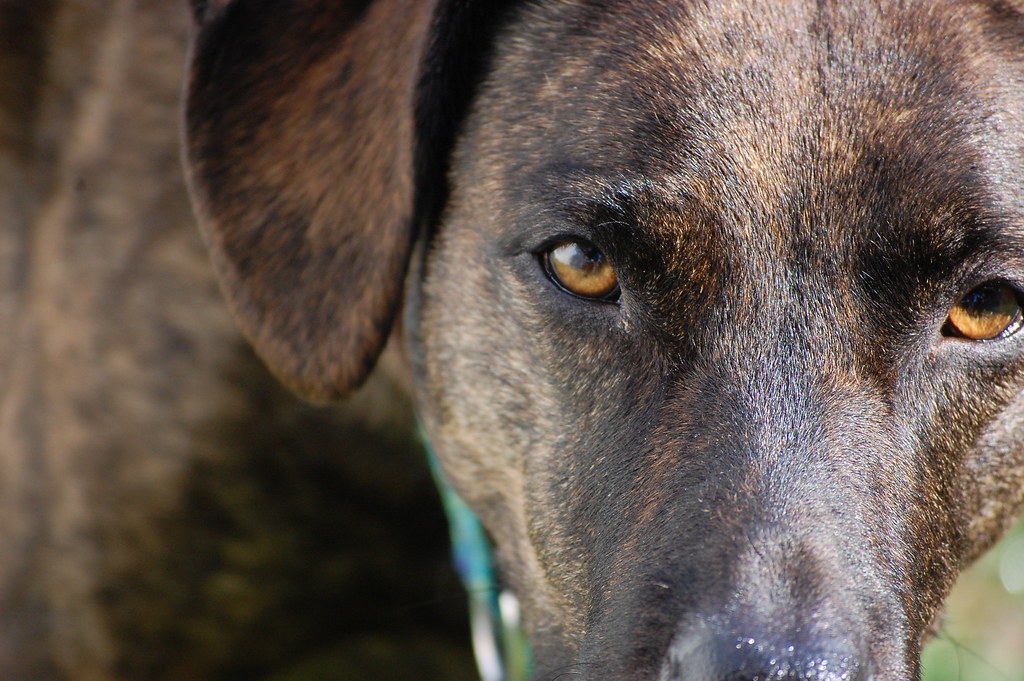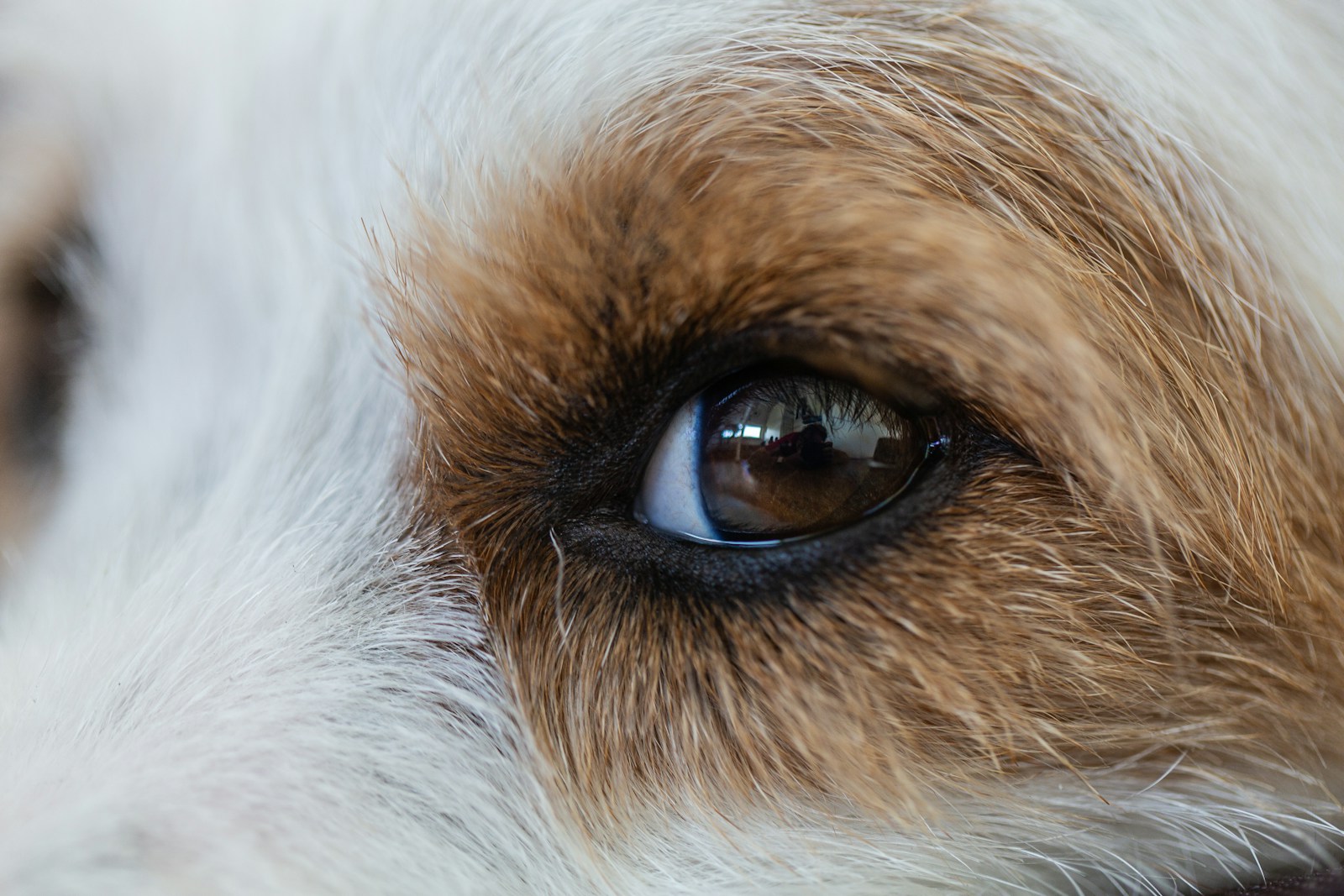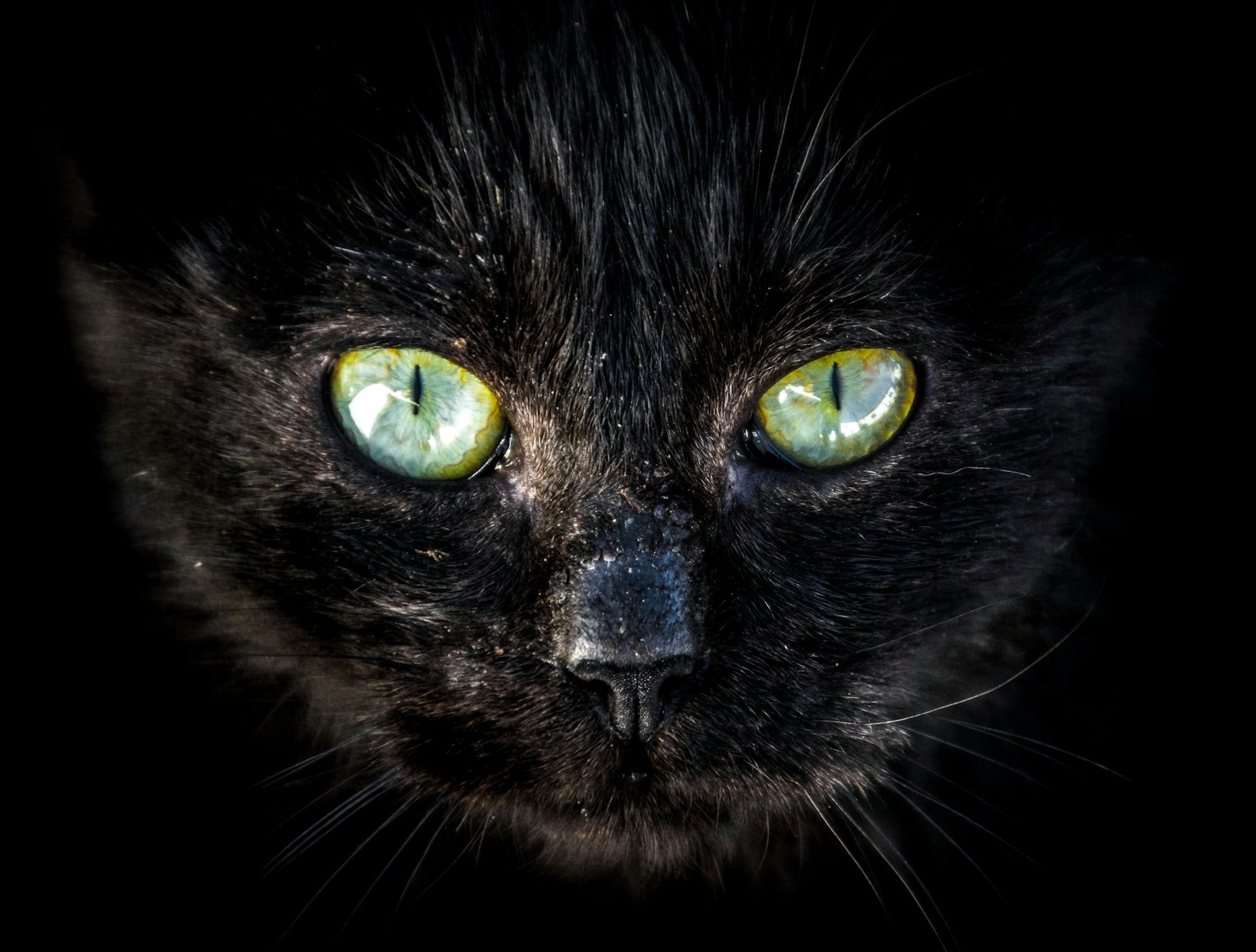Have you ever wondered what the world looks like through your dog’s eyes? From watching them chase a ball to their fascination with specific toys, understanding a dog’s vision reveals a world quite different from ours.
So, what color do dogs see?
While humans revel in a vibrant spectrum of colors, dogs view the world in a simpler way. This blog dives deep into a dog’s color perception, how their vision compares to human vision, and why your dog may love that bright yellow tennis ball so much.
How is a Dog’s Vision Different from Human Vision
The first step to understanding canine vision is to compare it with human vision. Humans are equipped with three types of color-detecting receptors in our eyes called cones. Human eyes contain three main types of color receptors (cones) that allow us to perceive a full spectrum of colors.
These cones allow us to perceive a wide range of colors, including red, blue, and green, as well as the countless hues formed by their combinations. However, dogs possess only two main types of color sensing receptors (cones), which means their vision is classified as dichromatic and limits their ability to detect different wavelengths of light.
This dichromatic vision limits the colors they can see. Dogs primarily perceive the world in blue, yellow, and hints of gray. Their color receptors are less varied than those in human eyes, which is why they see fewer colors. Colors like red and green, which fall outside the spectrum their cones can detect, appear as shades of gray or brown.
Are dogs color blind? To put it simply, dogs experience a type of red-green color blindness. Because dogs have only two types of cones, they cannot see the broader range of colors that a human’s eyes with more cones can detect.
Interestingly, while humans can focus on fine details and see a broad spectrum of colors, dogs excel in other areas, like detecting motion and navigating in low-light conditions.
Humans have more cones and different types of color sensing receptors, enabling them to distinguish a wider range of colors, whereas dogs have more rods for enhanced night vision. This is thanks to specific adaptations in their eyes that make them exceptional nocturnal hunters.
Key Differences Between Human and Dog Vision
- Color Perception: Humans see a wider range of colors due to three cones (trichromatic vision), while dogs are limited to two cones (dichromatic vision). In both humans and dogs, the retina converts light into electrical signals, which the brain interprets as visual images, including color.
- Visual Acuity: Most dogs’ visual acuity is lower than that of humans, meaning they see less detail from the same distance.
- Motion Sensitivity: Dogs have more rods in their eyes, making them better at detecting motion, especially in dim light.
- Peripheral Vision: Dogs have a broader range of peripheral vision compared to humans, giving them an edge in spotting moving objects.
These electrical signals travel through the optic nerve, allowing the brain to interpret the visual information and create the images we see.
How Does a Dog’s Vision Compare To A Cats?
Dogs and cats both have unique visual abilities adapted to their lifestyles, but there are notable differences between their vision.
- Color Perception: Dogs are dichromatic and may have blue-yellow color blindness and see fewer colors, primarily shades of blue and yellow, while cats are also dichromatic but may have a slightly enhanced ability to perceive subtle variations in color.
- Night Vision: Cats have superior night vision compared to dogs due to a higher number of rod cells in their retinas. This gives cats an advantage in low-light conditions, making them better suited for nocturnal hunting.
- Field of View: Dogs generally have a wider field of view, typically around 240 degrees, depending on the breed. Cats, on the other hand, have a narrower field of view, averaging around 200 degrees, but with better depth perception for focusing on prey.
- Sharpness of Vision: Cats tend to have better visual acuity than dogs, allowing them to see details more clearly, particularly at close range. Dogs’ vision can appear slightly more blurred in comparison.
- Motion Detection: Dogs are excellent at detecting motion, which helps them track moving objects or prey from a distance. Cats, while still good at sensing motion, excel more in gauging the speed and precise movement of nearby prey.
These differences highlight how each species has evolved vision tailored to their survival needs—dogs for detecting movement and exploring wide spaces, and cats for stalking and capturing prey in dim light.

Photo by Simon Hesthaven on Unsplash
What Colors Can Dogs Actually See
The idea that dogs only see the world in black and white is a common myth. Instead, their color perception revolves around two primary shades: blue and yellow. Dogs see the world mainly in yellow and blue, and these colors are the most vibrant to them.
While dogs can see blues and yellows clearly, they cannot see all the colors that humans can. These colors are vibrant and distinguishable to dogs, making them ideal for toys, accessories, and training tools.
Blue and Yellow in a Dog’s World
- Yellow Toys: Toys like yellow tennis balls are particularly eye-catching for dogs because they stand out against the environment, such as green grass or gray surfaces.
- Blue Objects: Blue toys, such as a blue ball, are among the most popular dog toys today. These are highly visible and engaging for dogs, as blue is a color they can easily discern and enjoy during interactive playtime both indoors and outdoors.
- Red and Green: Colors like red, orange, and green may appear similar to dogs as their vision cannot distinguish these hues. For example, a red ball on green grass will likely blend into the background, making it less noticeable.
When choosing toys for your furry friend, keep their color perception in mind. Offering your dog brightly colored yellow or blue toys can enhance their playtime and engagement.
Why Do Dogs Have Dichromatic Vision
A common question is why dogs evolved with dichromatic vision instead of the richer trichromatic vision humans enjoy. The answer lies in the evolutionary context of dogs’ biology.
Canine vision evolved to prioritize other survival-critical skills. Dogs possess unique visual adaptations that prioritize motion detection and low-light vision over color discrimination.
Adaptation to Low Light:
Dogs have a higher number of rods in their eyes compared to humans. Rods are responsible for detecting light levels and motion, with their ability to detect light levels being crucial for seeing in dim environments. This adaptation allows dogs to see and hunt effectively in dim light, which was crucial for their survival as nocturnal or early-morning hunters.
Detecting Motion:
Dogs’ ability to spot moving objects—even at a distance—is significantly superior to humans. This heightened sensitivity makes them exceptional hunters and explains why they tend to chase bicycles, squirrels, or anything moving quickly in their field of vision.
Ultraviolet Light:
Emerging research suggests that some dogs may see ultraviolet light, which humans cannot. This provides them with a unique perspective on their environment that might assist in tasks like tracking or detecting objects.
Rather than appreciating a broader range of colors like humans, dogs evolved to thrive in a way that suited their survival needs. Their vision emphasizes detecting faint movements or light in their surroundings over vibrant hues.

How Does a Dog’s Vision Impact Their Behavior
Understanding how and what dogs see can shed light on their behavior. Knowing how a dog sees the world helps us better connect with our canine friend and furry friends.
A dog’s ability to detect motion and color is complemented by their powerful sense of smell, which they often rely on when vision is limited. For example:
Why They Love Yellow Tennis Balls:
Among the various shades, yellow stands out sharply against green grass. This contrast makes it easier for dogs to locate and fetch yellow toys, enhancing their play experience.
Why They Chase Moving Objects:
Thanks to their acute motion-detecting abilities, dogs are naturally drawn to anything that moves, from a thrown ball to a car in the street.
Why They Struggle with Certain Colors:
If your dog appears disinterested in red or green toys, it’s likely because those colors blend into their environment. Choosing blue or yellow toys instead can make playtime more exciting.
Tips for Enhancing Your Dog’s Experience
Now that you understand dogs’ color perception, here are some practical tips to improve their world:
Pick the Right Toys:
Opt for toys in blue and yellow shades. They’re easier for your dog to identify, especially in outdoor settings like parks or backyards.
Design Their Environment:
When setting up play areas, avoid using items (like mats or obstacles) in red or green tones that may blend into the background.
Play in Low Light:
Take advantage of your dog’s ability to see in dim light. Early evening play sessions are great for engaging their senses.
Engage Other Senses:
While their vision is unique, dogs heavily rely on other senses like smell and hearing. Interactive toys with scents or sounds can stimulate your dog further.
What Science Teaches Us About Canine Vision
Research into canine color perception is ongoing, and scientists continue to uncover fascinating details about how dogs interpret the world. A dog’s eyes contain color sensing receptors known as cones, as well as color receptors, which determine which colors they can see.
The popular notion that dogs see only in black, white, and gray is incorrect—scientific research shows that a dog’s eye can perceive some colors, though not the full spectrum visible to humans. From the role of nerve cells in their eyes to studies on motion detection, understanding canine vision helps us build deeper connections with our pets.
In fact, a dog’s color vision is similar to that of a person with red-green color blindness. It also shapes the design of dog toys, training methods, and environments optimized for their needs.
Helpful Resources on Dog Vision and Perception
- American Kennel Club (AKC) – Can Dogs See Color?: A detailed article explaining the science behind how dogs perceive colors and how their vision differs from humans.
- PetMD – What Do Dogs See?: This guide explores the range of colors dogs can see and provides insights into their overall visual capabilities.
- VCA Animal Hospitals – How Do Dogs See the World?: A comprehensive resource discussing dogs’ vision, including their color perception, motion detection, and field of view.
- National Geographic – See the World Through a Dog’s: This article examines how dogs see the world differently from humans with visuals comparing human and canine sight.
- Science Focus – What Colors Can Dogs See?: A science-backed article that breaks down the biology of dog vision and their ability to distinguish colors.
An engaging and informative video explaining the nuances of dog vision with comparisons to human sight.
Make the Most of Your Furry Friend’s Unique Vision | What Color Do Dogs See?
Knowing that dogs view the world differently doesn’t make their experience any less vibrant. Their ability to discern blue and yellow, detect motion, and excel in dim light is a testament to how evolution tailors every sense to specific needs. By understanding their vision, you can make informed decisions about the toys, environments, and activities you share with your best friend.
Want to make your dog’s life even more exciting? Stock up on blue and yellow toys or switch up your dog’s play routine to engage their senses fully. With this knowledge, you’ll see the world a little more like your dog does—with curiosity, joy, and a focus on what really matters.






